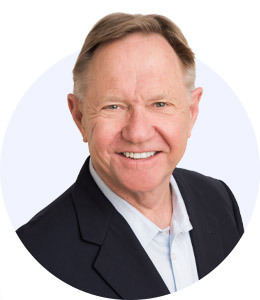Dan Collard, a colleague of mine, shared that he often puts my writings through a tool that captures which words are used most often. He told me that the word trust comes up frequently. This makes sense, with all the focus on building strong relationships in the workplace. While building trust has always been foundational in forming strong relationships, it is even more important now. Research from a variety of fronts reports that overall trust is down.
I write mostly about workplace solutions. However, we know that we often choose a product, organization, or person due to trust. On the other hand, there are those moments when a person’s action can make a “withdrawal” from a relationship’s emotional bank account. Occasionally, a trust bond will be severed forever. Most of the time, however, trust can be recovered.
There are times when an external factor can impact trust levels in an organization. I was talking with a person who was furloughed by their employer due to the pandemic. While they are now back working for the organization, and they do understand why they were furloughed, that bond of trust is still being rebuilt.
At Healthcare Plus Solutions Group we were having discussions with an organization about working together. They asked for a specific person in our company to be on the account. His name is Davy Crockett and they had worked with him years ago. When the person we were talking to said they wanted Davy on the team, she used the words, “People here trust him.”
We are always trying to capture best practices, so we asked Davy to drill down and articulate what he does to build a strong, sustainable, and ultimately trusting relationship. Davy took time to think about what he does and shared the following points. These are mindsets and actions he tries to cultivate in himself.
- Think about what you do as relationship building. Get intentional about building one-on-one personal relationships. Really get to know each person as an individual.
- Build guiding coalitions across all parts of the organization. Build teams. Get beyond your own work area. These interdepartmental relationships build trust and improve operations.
- Keep commitments. Do what you say you are going to do. If you realize for some reason, you can’t, let people know as soon as possible. Trust is built by keeping people in the loop.
- Be straight with people even when it is hard. Face difficult conversations head on. Also, own your mistakes. No one is perfect and when we are willing to admit our missteps it helps us connect better with people. Also, people will be more willing to share issues with us.
- Have a beginner’s mindset. It helps you have empathy for those new in a job or task. When we embrace a beginner’s mindset, we become better teachers.
- Help people achieve their goals. Every person in a leadership role is a development specialist for those they lead. This is important even if the development means they will eventually leave the department or organization. Personalize development. I call this the “N=1” approach. Taken from statistics it means that everyone is an N of 1, or a unique individual. People learn in different ways and at different times.
- Make things doable. Depending on where a person is at in their development, take time to assess whether what is being asked is currently doable. Narrow the scope so the person can develop. Fewer actions to learn will build success. More actions can be added as the person builds their skill set.
- Be sensitive to how a change will impact the person. What will be different? How can you help the person with the change?
I was working with an organization that changed start times for a department. The new start time caused many issues for employees who needed to take children to school. What seemed like a small 30-minute change was more disruptive than expected. All of it could have been avoided with some additional study beforehand. Also, when a change cannot be avoided take steps to make it as easy as possible. This may not mean totally painless, but people will appreciate the thought.
- Recognize people early and often. Give credit to others. Acknowledge those that are doing good work.
- Show gratitude. Let them know you are grateful for being able to work with them, that they are part of the team, and for the impact they have on others. Don’t underestimate what saying thank you and showing appreciation will do.
- Be interested. A tip: Count to three prior to responding in a conversation. It demonstrates listening, which is a sign of respect and a way of showing the desire to learn.
As Davy wrapped up, he summarized relationship building like this: “Be authentic, commit to others’ development and success…and do not be a jerk.”
My thanks to Dan and Davy for most of the content for this column. They are both always looking for better ways to teach things.

